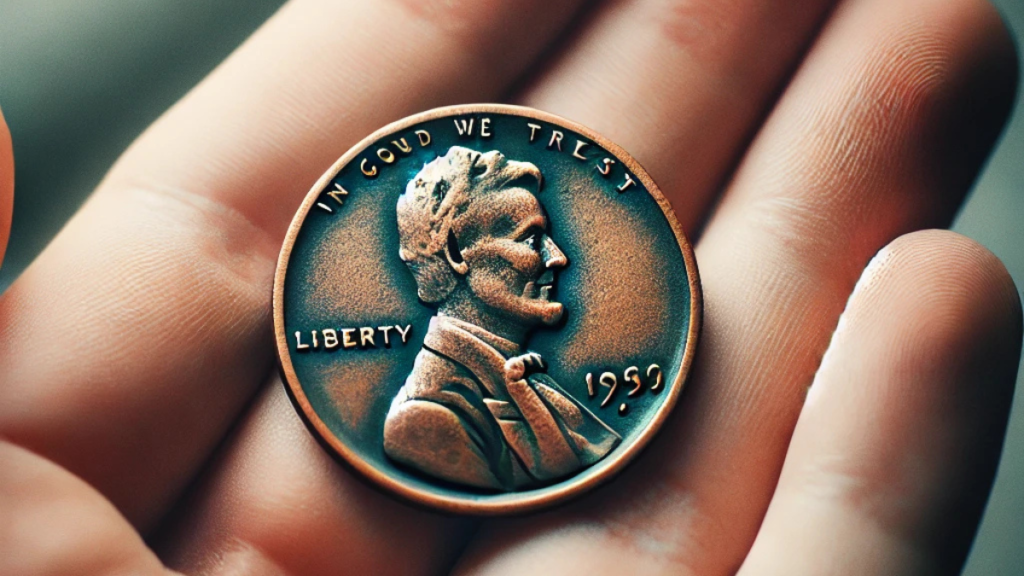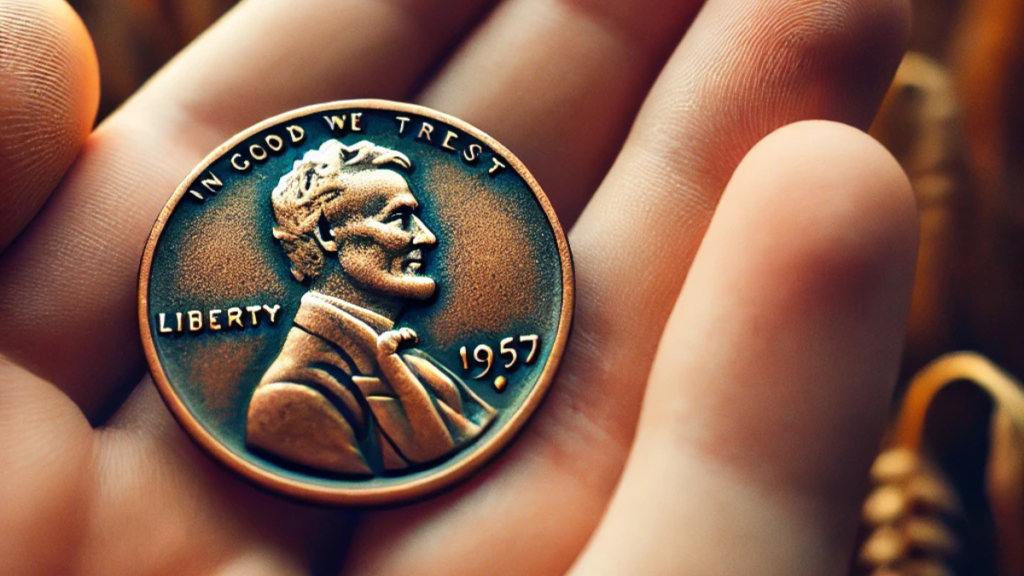Among numismatists, there are few coins that evoke the imagination as strongly as the Lincoln Wheat Penny. Struck from 1909 through 1958, these little copper pieces have become a treasure hunt for collectors, with some examples selling for astronomical amounts at auction.
As we enter into the interesting realm of wheat pennies, we’ll discuss their history, see the most valuable ones, and shed some light on why these simple coins are so popular.
The Birth of the Wheat Penny
The history of the wheat penny started in 1909, celebrating Abraham Lincoln’s centennial birthday. Designed by Victor David Brenner, it was the first American coin to have a president’s portrait on it, departing from the conventional image of symbolic figures.

Two stalks of wheat were featured on the reverse side, representing wealth and plenty an image that would earn the coin its lasting nickname.
Struck at three mints Philadelphia (no mint mark), Denver (D), and San Francisco (S) the wheat penny’s minting took place over almost half a century, creating a broad range of coins with varying degrees of rarity and worth.
Key Dates and Rarities
While the vast majority of wheat pennies are worth a few cents more than their face value, some dates and mint marks will fetch premiums. Here are the most valuable wheat pennies to search for:
- 1909-S VDB: The white whale of wheat pennies, with the designer’s initials (VDB) on the back. Only 484,000 were produced before the initials were dropped due to public demand.
- 1914-D: A low-mintage year for the Denver mint, so this coin is highly sought after in higher grades.
- 1922 Plain (No D): An interesting error when the Denver mint mark was skipped by accident, making it a rare variety.
- 1931-S: Another low-mintage issue, with just 866,000 coins struck.
- 1955 Double Die Obverse: One of the most well-known error coins, with heavy doubling on the obverse side.
Error Coins: Where Mistakes Equal Value
One of the most coveted wheat pennies are those which are mint errors. These errors, usually soon corrected, end up being highly rare and sought-after coins:
1943 Copper Wheat Penny: In World War II, the U.S. Mint temporarily went over to making pennies using steel in an effort to preserve copper for wartime usage. Nevertheless, a couple of copper 1942 planchets accidentally ended up during 1943 production.
One of the rarest and most valuable coins in U.S. history is these copper pennies from 1943. One was auctioned in 2010 for a whopping $1.7 million.
1944 Steel Wheat Penny: The reverse of the 1943 copper penny, these are steel cents that were accidentally produced in 1944 once the mint resumed making pennies out of copper. They’re very rare and costly, with some examples going for more than $100,000.
1955 Double Die Obverse: This error is well-known and features considerable doubling on the obverse, especially in the date and letters. These pennies are worth thousands of dollars even in relatively average condition, and high-grade specimens have brought almost $60,000 to auction.
Factors Affecting Value
There are a number of factors that help determine the value of wheat pennies:
- Rarity: The fewer the samples that are present, the greater the value of the coin.
- Condition: Coins in higher condition, particularly those graded uncirculated, fetch higher premiums.
- Historical Significance: Coins tied to significant events or eras in history tend to have added value.
- Mint Mark: Some mint marks are less common for certain years, which impacts the value of the coin.
- Errors and Varieties: Unusual minting errors or die varieties can greatly add to a coin’s value.
Grading and Authentication
For potentially high-value wheat pennies, professional grading and authentication are critical. Companies such as PCGS (Professional Coin Grading Service) and NGC (Numismatic Guaranty Corporation) offer expert assessment and encapsulation that can have a significant influence on a coin’s market value and collector’s value.
Coin grading is from Poor (P-1) to Perfect Mint State (MS-70), and higher grades bring exponentially more money. For example, a 1909-S VDB cent can be found for about $1,000 in Good (G-4) but over $100,000 in Mint State 65 or better.
Recent Record-Breaking Sales

The rare wheat penny market remains strong, and some recent sales highlight the continued popularity of these coins:
- In 2019, a 1943 bronze Lincoln Wheat Penny brought $870,000 in an auction, highlighting the staggering worth of this wartime error.
- A 1958 double-die obverse wheat penny in perfect grade (MS-67) went for $235,450, illustrating the value placed upon error coins that are high grade.
- The 1944-S steel cent, of which only two specimens are known to exist, is worth around $1.2 million in mint condition.
Collecting Strategies
For those who wish to assemble a set of wheat pennies, the following strategies can be used:
- Date and Mint Mark Sets: Try to acquire one penny from each mint and year, emphasizing getting the highest condition available in your price range.
- Error and Variety Hunting: Master the skill of locating and accumulating different minting errors and die varieties.
- High-Grade Collecting: Concentrate on acquiring the finest examples of common dates, which can still attract high premiums.
- Key Date Emphasis: Focus on acquiring the rarest and most valuable dates, even if in lower grades.
Preservation and Care
Careful preservation is essential to keep wheat pennies’ value intact:
- Handle coins by their edges to prevent leaving fingerprints or creating wear.
- Store valuable coins in non-reactive holders that are meant for long-term preservation.
- Do not clean coins, as improper cleaning will greatly decrease their value.
- Store coins in a cool, dry place to avoid environmental damage.
The Future of Wheat Penny Collecting
As we approach the 120th anniversary of the introduction of the wheat penny, enthusiasm for these coins is far from fading. The combination of history, scarcity, and the thrill of the hunt continues to draw new collectors into the hobby.
Recent events, including the possibility of an end to penny production, may further affect the value and collectibility of wheat pennies. In February 2025, rumors of a possible end to penny production in the United States surfaced, which might increase demand for current pennies, including wheat cents.
Debunking Myths
It’s essential to dispel some popular myths regarding wheat penny values:
- The “$300 Million Penny” Myth: Although there have been reports of a wheat penny being worth hundreds of millions of dollars, this is highly exaggerated. The highest authenticated sale of a wheat penny to date is approximately $1.7 million for a 1943 copper cent.
- All Wheat Pennies Are Worth Something: Although some wheat pennies are worth considerable amounts, most are only worth a few cents more than face value. Circulated common dates usually bring 5 to 10 cents apiece.
- Cleaning Increases Value: Numerous new collectors incorrectly assume that cleaning their coins will make them more valuable. In fact, cleaning can irreparably harm a coin’s surface and lower its value considerably.
Where to Buy and Sell Wheat Pennies
For individuals seeking to purchase or sell wheat pennies, a number of alternatives exist:
- Local Coin Shops: These can be a great starting point, providing in-person contact and professional guidance.
- Online Marketplaces: Sites such as eBay and numismatic websites offer a broad range of coins and the potential to sell to a worldwide market.
- Coin Shows: These events offer the chance to meet dealers and other collectors, as well as browse a wide variety of coins.
- Auction Houses: Major auction houses such as Heritage Auctions and Stack’s Bowers feature significant numismatic auctions for extremely rare or highly valuable specimens on a regular basis.
- Online Platforms: New platforms such as Whatnot are becoming popular places to buy and sell coins with live auctions and interactive functions.
Read More :- IRS Announces New Stimulus Check for 2025 – Key Deadline April 15th
Rare Wheat Pennies value
The world of rare wheat pennies offers a fascinating blend of history, artistry, and the thrill of the hunt. From the humble 1909 Lincoln cent to the legendary 1943 copper penny, these coins tell the story of America through the 20th century.
Whether you’re a seasoned numismatist or someone who’s just discovered a wheat penny in their change, the potential for finding a valuable treasure is always present. As we’ve seen, some wheat pennies can be worth thousands or even millions of dollars, but it’s important to approach collecting with realistic expectations.
The joy of coin collecting lies not just in the potential monetary value but in the connection to history and the satisfaction of building a collection that tells a story.
FAQs:-
Which Wheat Penny is the most valuable?
The 1943 copper penny and 1909-S VDB penny are among the most valuable.
What makes the 1943 copper Wheat Penny special?
Most 1943 pennies were made of steel; a few were mistakenly struck in copper, making them rare.
Where can I sell my valuable Wheat Penny?
Coin dealers, online marketplaces, and auction houses are the best options.


